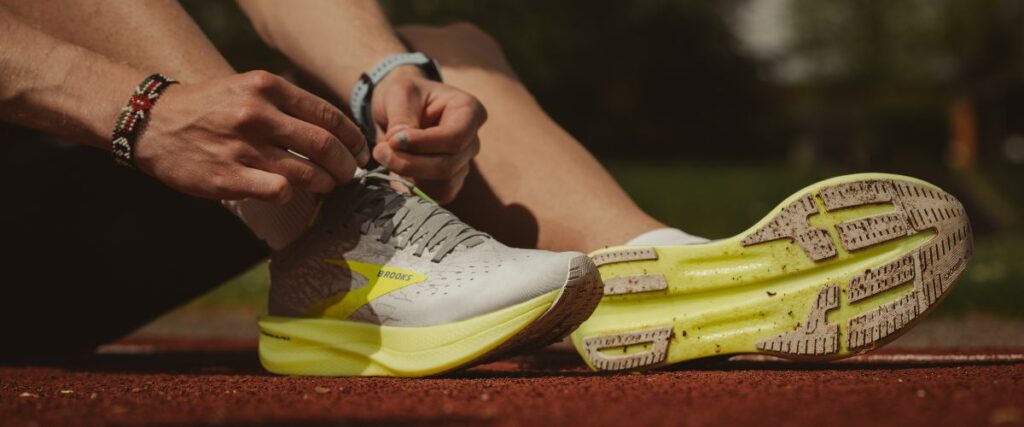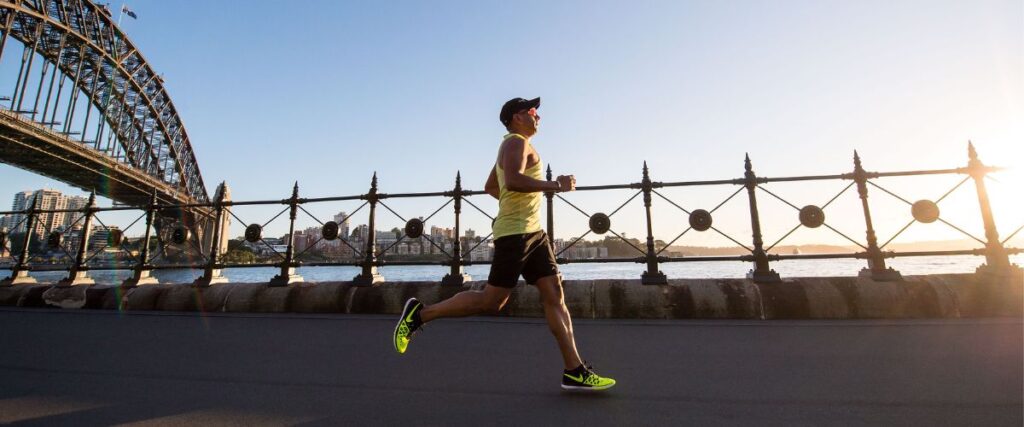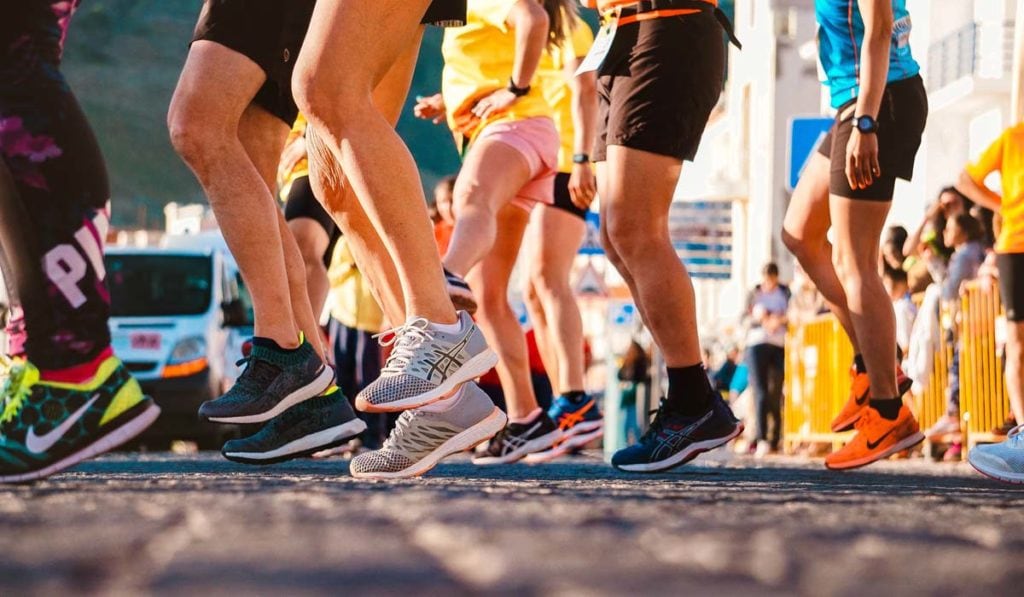
Do’s and Don’ts of Running After An Injury
Believe it or not, running is one of the most injury-inducing sports.1 Many runners suffer from overuse injuries and repetitive strains that keep them in a constant cycle of recovery and rehabilitation. These issues are common due to things like:
- Training errors like running too far too quickly or only completing high-intensity runs
- Wearing worn out running shoes
- A lack of sleep
- Not enough rest days
If you’re recovering from an injury, it can be difficult not to rush your recovery. Unfortunately, doing so could land you right back on the couch instead of on your treadmill or out on your favorite running trail.
To help you ease back into it safely, we’ve compiled a list of six do’s and don’ts when returning to running after an injury.
Do make sure you’re ready.

Our first and perhaps most obvious tip is to make sure you’re ready to start running again. There’s no need to rush! Getting back out there the second you start feeling better again may be your natural tendency, but it’s not necessarily the wisest decision.
If you’re dealing with a persistent injury and haven’t seen a doctor yet, schedule that appointment before returning to your typical running routine. Even if you’re feeling better, it’s important to determine the cause of the injury, treat it properly, and learn how to prevent it from happening again. Your doctor can help you do that.
And if you’re already under the guidance of your doctor or a physical therapist, follow their guidance. Although you know your body best, it’s good to heed their advice before returning to your running routine. As a result, you’ll be much less likely to aggravate your injury or pick up a new one.
Do take it slow.

When you’re returning to running after an injury, it’s tempting to jump right back into it full force. After all, if you love running, you’re likely chomping at the bit to hit the pavement or run your favorite Vingo routes again! However, the best course of action is always to take things slowly.
Each runner’s return to running will look different, but here’s some general advice for going slow:
- Gradually build up the intensity of your workouts: Start with small goals and use the run/walk method. Running for short spurts at a time will help ensure you maintain good running form and don’t develop any new injuries.
- Alternate running and rest days: Consider running every other day and resting on the days between. This strategy gives you adequate time to assess how your body responds to running without risking re-injuring yourself. If you find it challenging to sit still on your rest days, complete any physical therapy exercises recommended by your doctor.
- Add mileage over several weeks: Start with just a mile or two and gradually increase your mileage as you can. When you don’t need to stop for walk breaks, increase your mileage by one or two miles and then sit there for a week or two until you’re ready to up it again. There’s no rush! You’ll eventually get back to your baseline.
Don’t stop doing your physical therapy or cross-training exercises.

Maybe you don’t feel any pain anymore and feel like you’re back to normal. You might wonder if you need those PT or cross-training exercises. After all, if you feel as good as new, can’t you just get back to running?
Unfortunately, returning to running after an injury isn’t that simple. We highly recommend not giving up on those PT and cross-training exercises! Dropping them may mean you lose much of the strength you’ve acquired over time and be more susceptible to additional injuries. Instead of stopping your rehab exercises, continue with them but reduce the frequency.
For instance, if you had been doing PT exercises five days a week, scale it back to two or three days a week. Of course, we always recommend talking with your doctor or physical therapist first, but continuing those exercises will benefit you in the long run. Runners always benefit from a solid cross-training, stretching, and strengthening maintenance routine.
Do get plenty of rest.

Rest is crucial for all runners, whether you’re recovering from an injury or blasting through PRs left and right. If you don’t give your body the time it needs to rest, you’ll eventually burn out, suffer additional injuries, and your performance will suffer.
When returning to running after an injury, taking those rest days is even more critical. Sometimes assessing your symptoms can take several hours or even a whole day after completing a run post-injury. Some swelling or pain might pop up after your run, but they could be delayed.
Giving yourself plenty of time to rest between runs allows you to fully assess your pain level and any other symptoms that appear. If you experience severe pain, throbbing, or swelling the day after a run, give yourself more than just a day to rest. Wait until you feel better to head back out for another run.
Don’t hold on to any expectations.

If you’re used to maintaining a high running performance level, it can be hard not to have any expectations for your return to running. Or if your doctor gives you an estimated date for a full recovery, it can be frustrating when the process takes longer.
The best thing you can do in this situation is to have hope that you’ll recover and fully return to running after an injury, but try not to set a hard and fast date. If you do, you might find that you’re more focused on pushing yourself to recover by a specific date rather than listening to what your body tells you and honoring that.
Instead of pushing yourself to heal faster, focus on the here and now. Do things that will pay off later, like being consistent with your rehab exercises, attending all your PT appointments, and maintaining a gentle cross-training or strengthening routine (assuming your doctor approves).
Do maintain a positive attitude.

Recovering from a running injury takes time. There’s no getting around it. But while you’re in recovery mode, you must be diligent about staying positive. Otherwise, you could fall into the habit of entertaining negative thoughts like, “I’ll never get back to where I was.” or “I’ll always be injured, and this pain will never go away.”
Your mental health and attitude play a huge role in your recovery! Instead of getting down on yourself, stay positive and remember any previous injuries you’ve bounced back from. Or talk to other runners who have overcome past injuries and come back even better and stronger. And, of course, celebrate every single win, even if something seems like a minor accomplishment to you.
Keeping your attitude in check will help you recover more quickly and remain optimistic about your recovery, even when the process is slow-going or difficult. If you’re struggling with a negative mindset, it wouldn’t hurt to recruit help from family, friends, or a fellow runner to help you walk the line between having hope for recovery and maintaining a slow and gentle return to running after an injury.
Key Takeaways:
Returning to running after an injury is like a long-distance race, not a sprint. It takes time, patience, diligence, and hope. By following the tips listed above, you can eventually get back to your normal running routine, although the process may not be as fast as you hoped.Sources:
- Van Der Worp, M. P., Haaf, D. S. M. T., Van Cingel, R., De Wijer, A., Sanden, M. W. N. D., & Staal, J. B. (2015). Injuries in Runners; A Systematic Review on Risk Factors and Sex Differences. PLOS ONE, 10(2), e0114937. https://doi.org/10.1371/journal.pone.0114937








